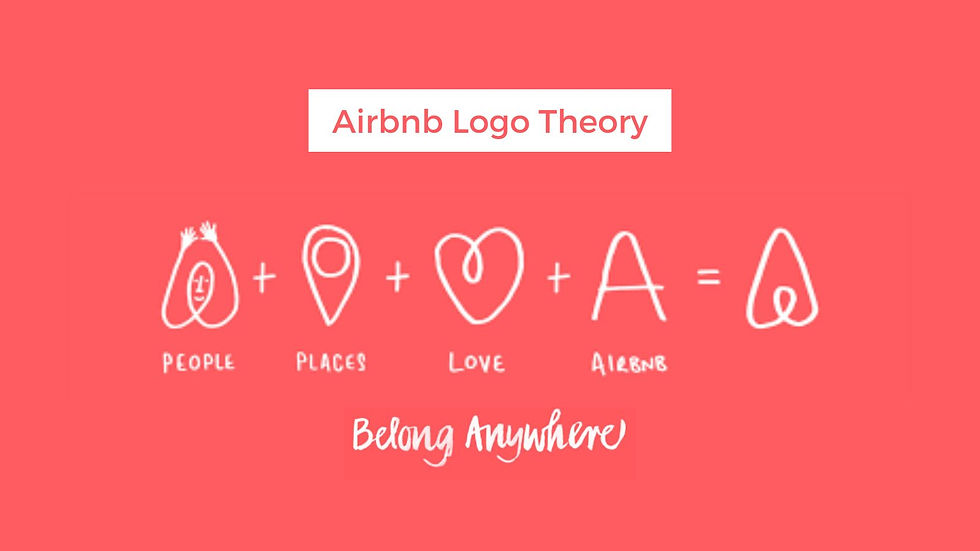Designing a Logo That Represents Your Brand Identity: A Step-by-Step Guide
- Bhawna Smriti
- Feb 3
- 3 min read
Updated: Feb 15
A logo is not just a visual symbol; it’s the foundation of brand identity. It tells your audience who you are, what you stand for, and how you position yourself in the market. The challenge?
Many businesses rush through the logo creation process without truly understanding its significance. This article is designed to bridge that gap—for both entrepreneurs who need an impactful logo and designers who craft them.
Here’s how you can take a logo from concept to execution, ensuring it serves as a long-term asset for your brand.

📌 Why a Well-Designed Logo is More Than Just a Pretty Icon
A logo is the first interaction people have with your brand. Get it right, and you establish trust. Get it wrong, and you risk blending into the noise.
🔹 First Impressions Matter: It takes only 0.05 seconds for someone to form an opinion about your brand based on its logo. (Source: Google Research)
🔹 Recognition Leads to Trust: Brands with distinct logos have 33% higher customer retention than those without. (Source: Harvard Business Review)
🔹 Simplicity is Key: The most recognizable logos in the world are simple, scalable, and versatile—think Apple, Nike, and McDonald’s.
✅ Case Study: Airbnb redesigned its logo in 2014 to emphasize community and belonging, moving away from a generic wordmark. The result? Increased engagement and a stronger emotional connection with users.

Step 1: Define Your Brand Before Designing Your Logo
Before you jump into colors, typography, or symbols, start with strategy. Your logo must align with your brand’s mission, values, and audience expectations.
🔹 Ask Yourself:
What do I want my brand to be known for?
Who is my target audience, and what appeals to them visually?
What emotions do I want my logo to evoke?
How does my brand differ from competitors?
✅ Pro Tip: Write a one-sentence brand positioning statement before designing your logo. This will serve as your creative brief. Example: “We are a bold, innovative fintech company that simplifies investing for millennials.”
Step 2: Choose the Right Logo Type
There are five main types of logos. Choosing the right one depends on your brand personality and market positioning.

✅ Example: FedEx’s wordmark cleverly integrates a hidden arrow, reinforcing its brand promise of speed and precision.
Step 3: Understanding Color Psychology & Its Impact
Color is one of the most powerful brand signals. Different colors evoke different emotions and shape how your audience perceives your brand.
🔹 Color Meanings in Branding:
Red: Passion, energy, urgency (e.g., Netflix, YouTube)
Blue: Trust, stability, professionalism (e.g., Facebook, IBM)
Green: Growth, health, sustainability (e.g., Starbucks, Whole Foods)
Black: Luxury, sophistication, power (e.g., Chanel, Nike)

✅ Case Study: McDonald’s red and yellow combination is backed by psychology—red increases appetite, while yellow conveys warmth and friendliness.
Step 4: Selecting Fonts & Typography That Match Your Brand Personality
Your logo’s typography should be as intentional as your visuals.
🔹 Font Personalities:
Serif Fonts (e.g., Times New Roman, Georgia) – Classic, authoritative, trustworthy.
Sans-Serif Fonts (e.g., Helvetica, Arial) – Modern, clean, minimalist.
Script Fonts (e.g., Pacifico, Lobster) – Elegant, creative, personalized.
Display Fonts (e.g., Impact, Playfair Display) – Bold, attention-grabbing.

✅ Example: Disney’s script font evokes whimsy and imagination, aligning perfectly with its brand identity.
Step 5: Sketch, Refine, and Test Your Logo Design
Once you have clarity on logo type, colors, and typography, begin sketching concepts.
🔹 Best Practices for Logo Design:
Start in Black & White – Ensures it works without relying on color.
Keep it Scalable – A great logo should look clear on a business card and a billboard.
Test in Different Backgrounds – See how it performs in dark, light, and grayscale modes.
Get Feedback – Test with your target audience before finalizing.
✅ Pro Tip: Use online tools like Adobe Illustrator, Canva, or Logojoy for digital refinement.
Step 6: Implement & Maintain Consistency
Your logo must remain consistent across all brand touchpoints.
✔ Website & Social Media – Profile pictures, banners, email signatures.
✔ Marketing Materials – Business cards, brochures, ads.
✔ Product Packaging – Labels, shipping boxes.
✔ Retail & Office Spaces – Storefronts, signage, uniforms.
🔹 Case Study: Amazon’s smile logo reinforces its friendly brand personality and is present across all its packaging, digital platforms, and advertisements.
Final Thoughts: Crafting a Logo That Lasts
A great logo isn’t just about aesthetics—it’s about strategy, psychology, and execution. By following this step-by-step process, you can create a timeless, scalable, and impactful logo that strengthens your brand identity.
💡 What’s Next?Start sketching your first logo draft, test different concepts, and refine your design based on user feedback. Your logo isn’t just a design—it’s your brand’s signature. Make it count! ✅
📢 What’s your favorite brand logo and why? Share in the comments!



Comments